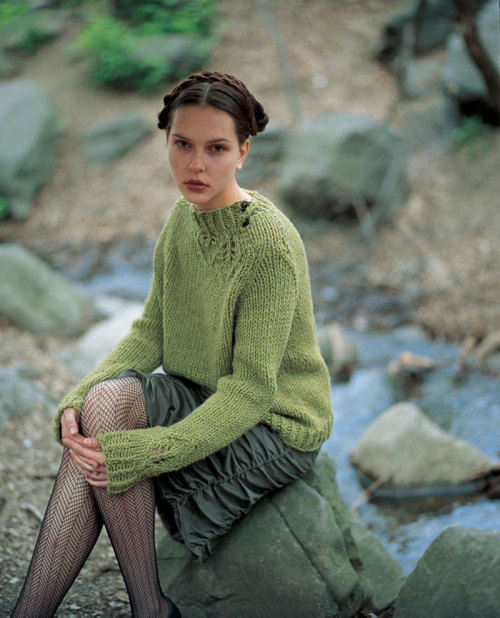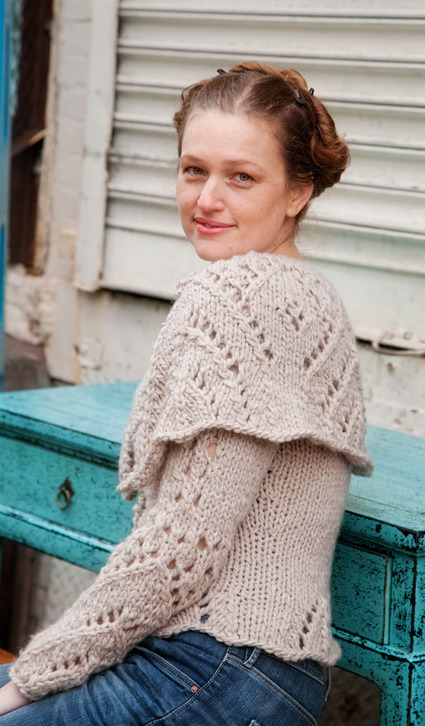
About six years ago (or was it seven?), I quit my job as an editor of physics books to pursue a more creative life. I had many ambitions, including finishing my novel, drinking more coffee, writing more songs, knitting a lot, eating breakfast with friends frequently, and trying to publish magazine articles. And so, it was on one of these lovely unemployed afternoons that I found myself at Borders in San Francisco's Union Square perusing the magazines. Stacked nearby on a rack all of its own was the book Loop-d-Loop by Teva Durham. To be honest, I was not immediately sure that it was a knitting book. I had never really seen anything like it before. The styling was so other-worldy, yet absolutely pretty and captivating. The book's paper was so thick! The dimensions were so large! It was the first knitting book I had ever seen that felt more like a coffee table book—an art collection, really—than something that a person would use in a utilitarian fashion (i.e., to knit from). Little did I know that this would be the beginning of my obsession with high-quality craft books.
Through a series of amazing incidents, fateful coincidence, and just plain luck, I found myself in New York City two years later, working as an editor at STC Craft (Teva's publisher). When I first arrived, Melanie and Teva were just wrapping up Loop-d-Loop Crochet, and were just beginning to talk about doing a third book, Loop-d-Loop Lace—a book that I wound up editing. It's rather surreal when you can actually recall the moment you first saw a designer's work—where you were, how it felt, the impression it made on you—and then later you find yourself working side by side with her.

As we planned the photo shoot, Teva and I sat in my office with the book’s amazing photographer, Adrian Buckmaster, admiring the garments and contemplating abstract hairstyles and wondering: To loop, or not to loop? The first book was chock-full of interesting hairstyle choices, which, over time, became a signature of Teva's brand. We laughed, because I have been looping my hair up into twists not unlike the model shown above (from the first book) for years. I had to wonder if I had been subconsciously inspired by Teva's first book. To my surprise, when Teva published a pattern called Lady Lovelace on Knitty.com a few months ago, she asked me to lend my hair twists to the photo shoot. I agreed, and after a quick and chilly shoot with Marianne Rafter (the result of which is shown below), here we are. Full circle.

Loop-d-Loop Lace picks up where the other books in the series left off. We wanted to maintain the edgy, modern feel from the first book, but integrate a slightly softer touch to complement the pretty lace stitches. As you can see, we’ve continued the loopy hairstyles (as shown below), but we kept them a bit tousled to go with the feminine styling. And while the garments may have a contemporary aesthetic, Teva’s thoughtful essays and pattern introductions root the lacework in history, reminding us where lace came from and why we still love it today. To see more images from this pretty book, click here.

